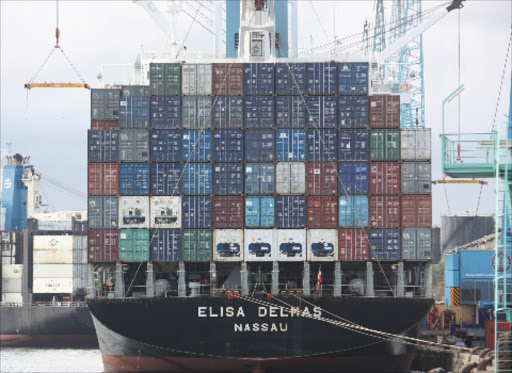•The shortage has affected imports into the country marked with reduced operations on the Standard Gauge Railway (SGR) freight services.
•This comes as effects of the recent Suez Canal blockage start to be felt.
International freight charges have gone up by between 20–25 per cent, signaling an imminent rise in the cost of goods in the country.
This comes as the impact of last month’s week-long blockage of the Suez Canal starts to be felt locally.
According to the Shippers Council of Eastern Africa (SCEA), the country and the East Africa region is currently experiencing a shortage of vessels and containers which has contributed to the jump on the cost of shipment.
The council says before Covid-19, it cost an average of $1,400 to ship a 40ft container from most ports to Mombasa. This has gone up to between$3,600 t0 $3,700.
Increased trade between Europe and Asia after a slow down at the height of the Covid-19 pandemic last year, has also affected movement of vessels to the East Africa including Kenya.
The trend has dented the country’s imports, marked with reduced operations on the Standard Gauge Railway (SGR) freight services, where the number of trains moving cargo from the Port of Mombasa has reduced to between three and five per day.
This is from an average eight–11 trains per day in the first quarter of the year, with Kenya Railways having reported a 28 per cent jump on SGR cargo in February, mainly on high volumes and improved efficiency.
Kenya-destined shipping lines were not spared. The delay had an impact on shipping lines from Europe and Asia hence, affecting Kenyan imports in terms of vessel availability, transhipments and general cost adjustment
KAM chairman Mucai Kunyiha
“It is true, there is a sognificant drop,” Kenya Ports Authority’s Nairobi ICD manager Peter Masinde told the Star on telephone.
The Suez canal was impassable between March 23–29 after giant cargo vessel– Ever Given operated by global shipping firm Evergreen wedged across the canal after being blown off course by high winds.
It kept more than 450 ships in waiting at the vital waterway which provides passage for about 12 per cent of global trade, with the 193km-long canal connecting the Mediterranean to the Red Sea, providing the shortest sea link between Asia and Europe.
About 30 per cent of vessels that sail in the international waters use the canal, according to SCEA.
After re-opening and increased demand for trade between Europe and Asia(manufacturing hub), after closure of industries in China last year, most shipping lines moved to bridge the gap with concentration on the two markets, SCEA said.
“A lot of big carriers have focused on China and Europe with only smaller vessels coming to the East Africa. This adds to the fact that most European markets have their goods manufactured in Asia before being shipped to Europe,” SCEA chief executive Gilbert Lang’at said in a telephone interview with the Star.

Local manufacturers have reported delays in shipment of raw materials and finished goods occasioned by the vessel and container shortage, which has affected movement of containerised goods.

According to the Kenya Association of Manufacturers (KAM), there was an average of one to two weeks delay in terms of overall time, especially for shipping lines using the Canal.
“Kenya-destined shipping lines were not spared. The delay had an impact on shipping lines from Europe and Asia hence, affecting Kenyan imports in terms of vessel availability, transhipments and general cost adjustment,”KAM chairman Mucai Kunyiha said.
Last week, millers noted an increase in freight costs which according to the Cereal Millers Association chief executive Paloma Fernandes, it has affected the price of wheat imports leading to the current increase in the prices of bread and wheat flour in the local market.
“There is a significant increase in marine freight due to availability of vessels as the world economy improves,” Paloma had said.
After the blocakge of the canal, KAM had warned of delays in arrival of raw material, finished goods imports, exports and increased cost of shipping, which would influence a jump in commodity prices, meaning Kenyans should exect to witness price adjustments on products on the local retail market.
The SCEA yesterday said it is currently conducting a survey to quantify the impact of the vessel and container shortages on the country’s trade and logistics, which has equally been impacted by Covid-19.
A lot of big carriers have focused on China and Europe with only smaller vessels coming to the East Africa
Shippers Council of Eastern Africa CEO Gilbert Lang’at
The pandemic distruption on the global trade affted trade between Kenya and its key business partners in 2020, according to the Kenya National Bureau of Statistics.
Official data shows a 4.7 per cent drop in trade value in the year to December, closing at Sh2.283 trillion, down from Sh2.396 trillion in 2019.
There was an 8.8 per cent drop in the value of imports which closed the year at Sh1.64 trillion, down from Sh1.80 trillion the previous year, with leading import source market of China slightly dropping its market share despite remaining Kenya’s dominant source market.
Kenya however made gains during the year as it increased its export volumes which grew 25.5 per cent in value to Sh641.2 billion, up from Sh510.9 billion the previous year.
Major destinations for domestic exports included Uganda, UK (vegetables), Pakistan (mostly tea), Netherlands( flowers and vegetables), and Tanzania which is a common trading partner on industrial goods and food commodity.
China led as the import source last year with volumes valued at Sh361.5 billion, followed by India which grew its value of exports to Kenya by 5.4 per cent to Sh188.6 billion.
Other markets are UAE, Japan and Saudi Arabia which make the top five import source for Kenya.


